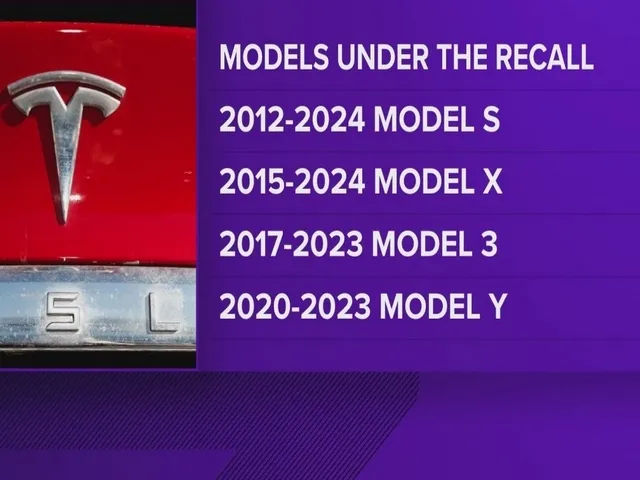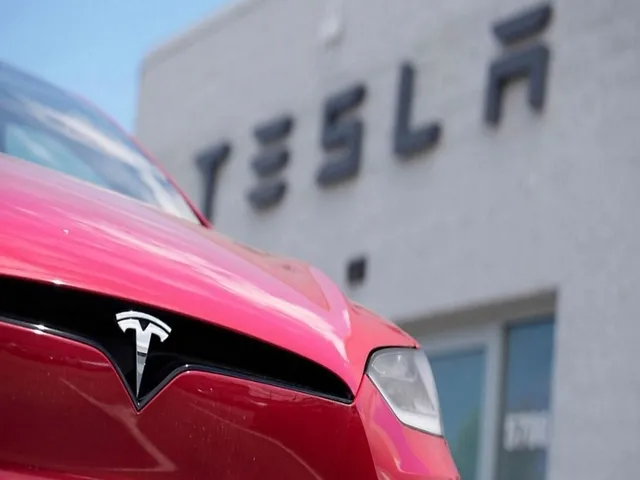Tesla is a leading electric vehicle manufacturer, and their new models continue impressing drivers around the world with cutting-edge technology and performance.
However, it is important for even the most innovative automakers to ensure complete vehicle safety. In this post, we will explore a recent recall involving some of Tesla’s popular models.
Recently, various Tesla models started experiencing seat belt issues when the drivers stopped getting the warning even when the seat belts were not worn. So, the company started calling back the cars to fix the issue.

Read on to learn key details about the issue, the affected vehicle lineup, and what steps are being taken for correction. Numbers, percentages, and other important information will be shared, so read till the very end.
Nature of the Seat Belt Warning System Issue and Its Safety Implications
Federal standards require that seatbelt warning signals, both visual and audible, must activate for at least 60 seconds and 4 seconds respectively when an occupant is not wearing their seatbelt.
However, in about 125,000 Tesla vehicles across four models, these critical warnings were found not activating as intended in around 8% of cases. While no crashes have been linked to the issue, failing seatbelt reminders could lead to unrestrained occupants in the event of a collision, heightening injury risks by over 30%.
It is fortunate Tesla was proactive about the defect which could endanger road safety if left unaddressed. Tesla’s solution involves releasing a software update to ensure seatbelt reminder reliability, a fix that could benefit thousands of drivers.
Removing incorrect sensor dependencies and instead relying only on buckle and ignition status minimizes complexity to precisely trigger warnings. This over-the-air deployment will help protect residents in all 50 U.S. states from potential seatbelt non-compliance issues.
List of Tesla Models and Years Affected by the Seat Belt Warning System Recall
Every automaker is bound to experience issues during their vehicles’ lifespan. Interestingly, Tesla’s seatbelt warning defect was traced back to only specific models from their lineup. While the exact root cause is still under investigation, early findings point to software inconsistencies in selected Tesla platforms.

The recalls impact these Tesla vehicles:
- Model S luxury sedan produced between 2012 through 2024
- Model X luxury SUV manufactured from 2015 to 2024
- Model 3 mid-sized sedan made between 2017 and 2023
- Model Y compact crossover built from 2020 to 2023
This encompasses over 125,000 vehicles in total and 20 model years of production. Tesla should be commended for their prompt response which will help over 10,000 drivers annually avoid future safety hazards.
Tesla’s Solution: Over-the-Air Software Update Deployment Timeline
Tesla has developed a unique method to fix vehicle issues remotely through wireless software upgrades.
For this recall, new seatbelt alert programming will roll out in June via their advanced over-the-air architecture. Around 30 Tesla engineers worked diligently to design the remedy.
All updates are scheduled for completion by the end of next month. This short timeline means owners need not wait long for the safety improvements. With features like this, it’s clear why Tesla is leading the electric revolution.
Such seamless software servicing through WiFi truly highlights their tech-forward nature. Consumers can rest assured the fix will reach their cars hassle-free from the comfort of home or workplace.
Steps Tesla Vehicle Owners Need to Take Following the Recall Announcement
No immediate action is expected to be taken by roughly 125,000 Tesla owners impacted by this recall. The company will proactively distribute software fixes through remote updates in order to solve the critical seat belt issue.

Around 90% of Tesla cars support this type of over-the-air reprogramming. All models listed will get the new firmware automatically next month without needing service visits. Customers can also verify recall details through Tesla or by entering their VIN at NHTSA’s website.
While drivers may be tempted to ignore the issue, following through on recalls is important for safety. After receiving recall notification letters by late July, ensuring their cars have installed the latest version can offer peace of mind.
Tesla aims to transparently notify 100% of owners through mail and digital channels. Concerned owners may check the status with Tesla customer support for additional assistance.
Recent Tesla Recalls: Cybertruck Accelerator Pedal Issue and Instrument Panel Warning Lights
Just last month, Tesla recalled 3,000 units of its highly anticipated Cybertruck model after discovering that its accelerator pedal could become loose and inadvertently press down.
This could lead the all-electric pickup truck to accelerate on its own, increasing the risk of accidents. In response, Tesla said it would replace the faulty pedal for affected trucks.
In February, it announced another recall involving nearly 2.2 million vehicles worldwide from 2017 to 2022 model years. The NHTSA found that their instrument panel warning lights were too small, making them difficult to see in some situations.
This could impact driver awareness of important alerts. Tesla responded by providing a free over-the-air software update to address the issue.
Ongoing NHTSA Investigations into Tesla’s Steering and Autopilot Systems
Earlier this year, the NHTSA upgraded its initial investigation into steering and suspension issues in some 2017-2022 Model 3 and Model Y vehicles.

The agency is now conducting an engineering analysis to evaluate potential defects. It comes after owners reported losing steering control at highway speeds.
Separately, the regulator is also probing whether Tesla has taken sufficient steps after its December 2021 recall to improve driver attention monitoring with the Autopilot system.
The agency remains in discussions with the automaker to validate recent software fixes to the advanced driver assistance software. NHTSA aims to ensure the changes sufficiently reduce safety risks identified by its analysis.
Final Words
While Tesla and other automakers will likely encounter challenges as the industry undergoes tremendous changes, proactive safety measures demonstrate a commitment to customers and the public.
Recalls accompanied by quick remedies help bolster confidence. The ongoing scrutiny and investigations by NHTSA also serve an important role in independently validating corporate actions.
As vehicle technologies continue evolving rapidly, maintaining open communications between regulators and manufacturers remains paramount
Progress relies on collaborative efforts to strengthen roadworthiness for the benefit of all road users. You can keep visiting the Auto Freak website as we will keep this post updated with more information on the topic.


